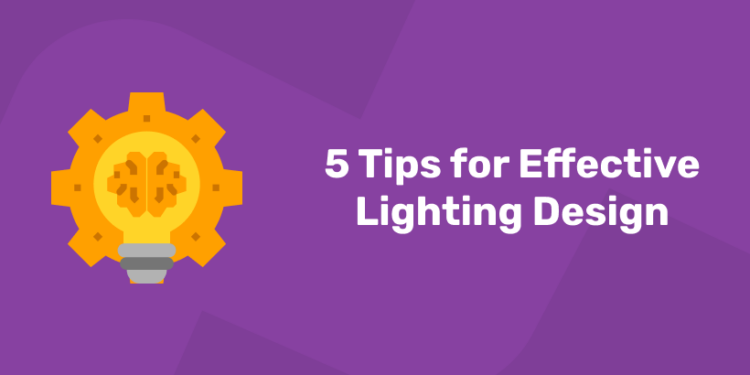Table of Contents
A poorly light workspace can detract from even the most beautifully constructed offices. Lighting levels are an important part of any workspace as they can affect productivity, focus and views of guests and staff. By learning some principles and guidelines for lighting design, you can more easily equip your facilities with lights that support an efficient workplace.
If you’ve ever had a meeting in a dimly lit room or struggled to work in an office with harsh, flickering overhead lights, you know the difficulty of trying to focus in such an environment. Lights can make or break the productivity of an entire office, and if your building is still running on outdated, harsh or inadequate lighting, you could be giving your visitors the wrong impression. Your lighting affects the face of the company, and if you want people to see you as a modern, progressive business, you need lighting design concepts that reflect these values.
Elevate your career with MEP Course! Get Free Demo Here!
5 Tips for Effective Lighting Design
1. Don’t Light Everything
While it might be tempting to flood a room with light, this approach can make your space look flat and uninspiring. Instead, focus on using special lights with beam control to create layers and depth. This approach not only increases the visual appeal of your space, but also saves energy and elevates your interior. Think of it as giving your project a unique personality without overpowering it.
2. Design with Layers
Forget one-dimensional lighting; it’s all about creating depth and visual hierarchy. By using 3 to 6 layers of lighting, you can highlight architectural elements, textures and artwork and guide the flow through the space. This technique will transform your environment into a luxurious and practical masterpiece, making every corner visually appealing and functional.
3. Design for Looks
A great lighting design should enhance the overall appearance of the space. While interiors, objects and people are essential, the lights themselves play a key role. Demonstrating the impact of good lighting through application images can help architects and clients appreciate its value. Seeing his vision beautifully lit is a game changer. Check out our website for inspiring application shots of each product.
4. Design for Activity
Different areas have different primary activities, from sleeping to dining to relaxing. A well-thought-out lighting design takes these activities into account and creates the perfect mood for any space. For multi-purpose rooms such as a lounge where children play and study, using different layers of lighting at different levels can create the right atmosphere for each activity. It’s about understanding the needs of each space and making it functional and enjoyable.
5. Design with Control
Flexibility is key in lighting design. By independently controlling each layer of lighting, you can create different scenes in one space that correspond to different activities. Whether you’re hosting a romantic dinner, yoga or a live party, versatile lighting options will ensure your space is always ready for any occasion. It’s all about being adaptable and making the most of your lighting design.
The Different Purposes of Lighting
Mood and Ambience
Home lighting design can be used to create a warm and welcoming effect when relaxing or to provide functional light for tasks such as reading, sewing, watching TV, dining or security.
The type of fixture and the lamp used with it depends on the type of lighting required. Remember – lighting fixtures and lamps should be chosen not only according to their appearance, but also according to the effect they provide.
Light creates “atmosphere” and different lighting in the home can provide a variety of different “scenes” and moods. Different types of lighting may be needed to provide different moods and effects in the same room. This will allow some lighting to be used for low-level mood lighting and others for functional purposes such as reading or sewing.
Functionality & Light Levels
The human eye can see through a wide range of different light levels – from full sun daylight to a partially moonlit night.
The basic rule is that the more light, the better you can see. This is why we need more light for reading than watching TV. If you have too much light while watching TV, the image on the screen becomes more difficult. If you have too little light when reading, the print is too hard to see.
Another important aspect of light level is that the older a person is, the more light they need to see. The average 10-year-old can easily read in four times less light than the average 30-year-old.
This is why older people need glasses for reading and such. The finer the task that needs to be seen, the more light is needed. This proven fact is applied to lighting level requirements for industry and commerce and there is an AS1680 standard that covers these required lighting levels.
Although the standard does not deal with domestic lighting, it specifies the different levels of lighting required for different rooms. For example, the lighting level in kitchens is much higher than in bedrooms or living rooms. This is because it is more important to see clearly in a kitchen where sharp knives are used than in a room that is used for less visual purposes.
Another thing the eye relies on to see details is contrast – the mixture of dark and light. This is why we use spotlights to highlight images and such – it makes them stand out “in contrast” with lower ambient (or average) lighting. The contrast may also be too strong. For example, watching TV or looking at a computer screen in a completely dark room can cause eye strain because the light only comes directly from the screen. This is why we often place a lamp close to the screen or dim the lights so that our entire field of vision is around the same brightness.
General Lighting
General lighting (also called ambient lighting) provides a space with general lighting that, in the absence of natural light, should provide a comfortable level of brightness that allows people to see clearly and move safely. General lighting can be achieved by using most types of non-directional lights such as pendant lights, down lights or wall lights.
Task Lighting
The task lighting design concentrates light on a relatively small area. It is usually more economical to provide a high level of light in the immediate area we want to look at than to light the entire room at the same level. There are a number of different luminaires suitable for task lighting. These include table lamps, desk lamps, standard lamps (floor lamps) and certain types of spotlights. Equipoise™ lamps are good examples of work lights. These are designed to be easily repositioned so that their light can be precisely directed onto any surface. Task lights are ideal for desks, reading areas, desks or anywhere else where small or complex objects need to be seen in detail.
Accent Lighting
Accent lighting is directional lighting that is used to highlight a specific object (also called highlight or spot lighting). Accent lighting can be used to create dramatic effects by highlighting a painting or other artwork, plants, furniture or architectural features of the home and so on.
There are many different types of reflectors that use all kinds of lamps. some of them are designed to be panned and refocused, so the effect or lit object can be easily changed.
To make your life easier and help you choose the right lights, we’ve created the perfect guide to help you choose the perfect light for the perfect place.
Master MEP Design with Industry-Leading Training!
Gain in-depth knowledge of Mechanical, Electrical, and Plumbing (MEP) Design with expert-led courses. Learn HVAC, fire safety, sustainable building strategies, and BIM applications to excel in the construction industry.
Know MoreChoose The Right Light Fixtures
Ceiling Lights
Are you looking for ambient lighting that will brighten or light up a room on its own? End your search with ceiling lights. They are best used in areas where you need bright and unobstructed lighting, such as your living room, bedroom or even your kitchen.
Wall Scones
Wall scones can be used as task or even ambient lighting. They are attached to the wall and cast light upwards or downwards. They tend to give the designated space an elegant and polished look. They are most often used in bathrooms, hallways or living rooms.
Chandeliers
Perfect when you want to add a touch of royalty and elegance while lighting up your space. These ambient lights are extremely versatile and can be placed in different rooms according to the purpose. They also come in a variety of styles that you can choose from when decorating your room.
Pendant
Do you want to hit your favorite piece of decoration or light up the corner of the room? Hanging lights known as Task Lights are built for this purpose. They can be used to enhance objects or a corner of a room. For example, artwork, a pool table, or even plants.
Recessed
Recessed lights are a hidden light source. They are most often installed in a hollow opening in the wall or ceiling. It creates the illusion of light shining from a hole in the ceiling.
Lamps
Lamps can be fixed or freestanding units used for task or accent lighting. They come in different variants and are a mobile light source. It’s the easiest way to decorate an area by adding a lamp or two. There are floor lamps, table lamps, wall lamps and many more. It can be used in any part or corner of the room that you want to brighten up.
Track Lighting
Most often placed in a linear arrangement that resembles a track, they are ideal for task or accent lighting. It can be anchored or suspended from the wall. It can be used in small rooms to make the room look like a bigger space. They can be installed in kitchen islands to help you perform your tasks better.
Cove Lighting
Cove lighting, which is used as ambient light, can be used when you don’t want a visible light source and still need a dimly lit room, but not harsh brightness. It is located in the groves of the edges of the walls and casts light upwards. Best used in bedrooms.
Soffit Lighting
Give your space a dramatic look with this task and ambient light. It directs the light down and gives the wall a flood of light. It can be used on kitchen counters or on the walls of the hall to make the wall shine beautifully.
Lighting for Security
Safety lighting design has two aspects. The first is to make people feel safe and secure, the second is to deter potential criminals. It is a proven fact that the right kind of lighting achieves both of these goals. After all, a well-lit home is less likely to be targeted by a burglar than a home in the dark, and a homeowner will feel safer outside if they can see well enough to spot a would-be intruder. There are a large number of different lighting options available for outdoor use these days. Not only does it ensure safety and security, but it can also provide great effect and outdoor recreational lighting.
A well-designed lighting design scheme includes multiple light sources that can be used to perform specific tasks and activities in the home. Different types of lighting include backlighting, up lighting, LED strip lights, decorative lights and sconces that combine to create a layered lighting scheme. This guide answers five design-related questions on how to incorporate layered lighting into your home decor.
Learn MEP Draftsman Course to skill up! Get Free Demo Here!
Layer Your Lighting
What are the different layers of lighting?
- Ambient lighting forms the first layer of lighting design, which is responsible for the overall illumination of the room. It acts as a base layer on top of which the other two layers of light are added.
- Task lighting or focused lighting forms a second layer of lighting that allows you to perform specific tasks such as reading, cooking, studying, shaving or applying make-up.
- The final layer of lighting is accent lighting, which covers a small area and is strategically placed to highlight certain architectural elements or specific objects.
What are the functions of different layers of light?
- Ambient lighting allows you to see your surroundings and perform some basic activities. It is a combination of natural light and ceiling lighting.
- Task lighting illuminates work surfaces such as worktops, a desk or a reading corner. Task lighting prevents glare or shadows from being cast on the work surface.
- Accent lighting highlights areas of interest such as artwork, design details, wall decorations and photographs. It’s a great way to add an element of drama to the focus area. Accent lights also act as a secondary light source that can be cleverly introduced into areas where there is not enough ambient light.
Which light fixtures are best suited for the different layers of light?
For ambient lighting
- Natural light (direct or indirect sunlight) contributes to the ambient lighting design of the home during the day. Sources of natural light are windows, skylights, atria, balconies and courtyards.
- Fixtures such as chandeliers, pendant lights, semi-recessed or recessed fixtures, or a ceiling fan with an attached fixture can all contribute to the ambient lighting of the home. Recessed niche lighting and upward-pointing sconces can also provide soft ambient light.
For task lighting
- Focused lighting can be achieved with table lamps, table lamps, adjustable floor and swivel arm lamps, directional track lights, console lights, under cabinet lights, recessed lights and wall lights.
For accent lighting
- Accent lighting includes lights and picture lights that draw attention to photos or art, while string lights, LED lights, niche lighting and directional track lighting create focal points on the walls. For maximum impact, make sure the lighting created by the accent lighting is three times brighter than the surrounding space.
How should we incorporate task lighting into different areas of the home?
- Install console lights or sconces on either side of the bathroom sink for activities such as shaving or applying makeup.
- Introduce under-cabinet lighting in your kitchen as it’s the perfect way to illuminate your worktop food preparation area and dark corners of the kitchen. This form of lighting eliminates the shadows cast by the ceiling cabinet and itself only by overhead lighting that would be above and behind them.
- Place lamps on either side of the bed to provide enough light for reading.
Do we require separate light fixtures for each layer of light?
Some fixtures can function as two layers of light. For example
- Ceiling lights, such as pendant lights, can be used for ambient and task lighting in the home.
- Track and recessed lighting can be incorporated into any of the home’s lighting layers.
- Chandeliers with dimmers are ideal for ambient and accent lighting in the home.
Use Dimmers and Controls in Lighting
Using dimmers and controls in lighting allows you to adjust the brightness of fixtures, create different moods and atmospheres in a space by changing the intensity of light depending on the activity or time of day, while potentially saving energy by using only the necessary amount of light.
-
Mood setting:
Dimming lights can greatly affect the atmosphere of a room, creating a relaxing atmosphere for watching TV, a focused environment for work or a romantic environment for dinner.
-
Energy efficiency:
By using only the desired level of light, dimmers can help reduce energy consumption and extend the life of certain types of light bulbs.
-
Flexibility in design:
Lighting designers can use dimmers to create dynamic layers of light that enhance the aesthetics of a space.
-
Different control types:
- Wall-mounted dimmers: Standard switches that can be manually adjusted to change light intensity.
- Remote controls: Allows you to adjust the lighting remotely.
- Smart lighting systems: Integrate with home automation systems and enable control via smartphone apps or voice commands, often with features such as scene presets.
- Wall-mounted dimmers: Standard switches that can be manually adjusted to change light intensity.
- Dimmers are widely used in a variety of spaces including living rooms, bedrooms, dining rooms, offices, retail stores, and theaters.
Important instructions when using the dimmer:
- Bulb compatibility: Not all bulbs are dimmable, so check compatibility before purchasing dimmers.
- Dimming range: Look for dimmers that offer a full dimming range for optimal control.
- Professional installation: Complex lighting systems with multiple zones may require professional installation.
When considering color temperature and lighting placement, the key idea is to select the appropriate Kelvin value (warm, cool or neutral) based on the desired mood and function of the space, while strategically placing lights to highlight specific areas, create depth and achieve the desired visual effect; for example, using warm lighting in the living room to create a cozy atmosphere and placing cooler lights in the kitchen for task-focused lighting.
Key points to consider:
- Color Temperature (Kelvin):
- Warm (low Kelvin): 2700K – 3000K – Creates a cozy, relaxing feel, ideal for bedrooms, living rooms and dining rooms.
-
- Neutral (mid-range Kelvin): 3500K – Provides balanced light, suitable for kitchens, bathrooms and workspaces.
-
- Cool (high Kelvin): 4000K – 5000K – Promotes alertness and focus, often used in offices and task-oriented areas.
- Lighting Placement:
- Ambient Lighting: Widely diffused light to illuminate an entire room, often using ceiling lights or recessed lighting.
-
- Task Lighting: Focused light for specific activities such as reading, cooking or working, usually placed directly above the task area.
-
- Accent Lighting: Decorative lighting to highlight specific features or create visual interest, such as track lighting or sconces.
Examples of how to combine color temperature and lighting placement:
- Relaxing Bedroom:
Use warm white bulbs in ceiling lights and bedside lamps for a calming effect.
- Inviting Dining Room:
Combine warm ceiling lights with concentrated task lighting above the dining table for a comfortable atmosphere.
- Productive Workspace:
Use cool white light in ceiling lights and task lighting with adjustable brightness for focused work.
- Art Gallery:
Highlight artwork with focused spotlights using a neutral color temperature for accurate color rendering.
Important considerations:
- Dimming capabilities:
Allow the light level to be adjusted throughout the day to suit different moods and activities.
- Natural light:
Consider the amount of natural light in the room when choosing color temperature and placement of artificial lights.
- Room size and layout:
The size and shape of the room will affect how many and where lights are needed.
Master MEP Design with Industry-Leading Training!
Gain in-depth knowledge of Mechanical, Electrical, and Plumbing (MEP) Design with expert-led courses. Learn HVAC, fire safety, sustainable building strategies, and BIM applications to excel in the construction industry.
Know MoreEmbracing Natural Light
Day lighting, the use of natural sunlight as the primary source of light in buildings, is not only an aesthetic design, but also an essential environmental strategy. Using sunlight reduces dependence on electric lighting, lowers energy costs and lowers carbon emissions. Below I outline a seven-point strategy for integrating effective day lighting into commercial buildings, drawing on the principles of sustainable architecture.
1. Understand the Basics of Day lighting
Before diving into complex strategies, it is essential to understand why day lighting matters. Buildings consume a significant amount of electricity, mainly for lighting. By using natural light, we can significantly reduce this consumption. In addition, natural light has been shown to increase human productivity and well-being, contributing to a more pleasant and productive work environment.
2. Design with Geometry and Orientation in Mind
The shape and orientation of the building are essential to maximize the use of daylight. In the Northern Hemisphere, south-facing windows capture the most sunlight year-round, while north-facing windows can provide more consistent, diffused lighting, ideal for environments where glare is an issue. East and west orientation should be managed carefully to minimize glare and overheating during the morning and afternoon.
3. Opt for High Albedo Materials and Colors
The color palette and materials of the interior play a crucial role in day lighting. Surfaces with high albedo (reflectivity) such as light walls, ceilings and floors can effectively distribute sunlight deeper into the building. Matte surfaces are preferable because they prevent glare and improve the even distribution of light.
4. Incorporate Advanced Window Design
Strategically designed windows are essential to control the quality and quantity of light. Features such as walk-through windows, skylights and light shelves can bring in more natural light while minimizing direct sunlight that can lead to glare and excessive heat. Properly treated windows with glazing or shading devices also help to control the influx of light and maintain thermal comfort.
5. Utilize Reflective Design Elements
Incorporating features such as light shelves that reflect light onto ceilings and deeper into rooms can improve the quality of interior lighting. This indirect lighting helps distribute the light evenly, avoiding the pitfalls of sharp shadows and glare common with direct sunlight.
6. Integrate Smart Lighting Control Systems
A smart lighting control system can optimize the balance between artificial and natural lighting. Such systems adjust indoor lighting based on the amount of daylight available and ensure that energy is not wasted when there is sufficient natural light. Educating building occupants to use these systems can further increase energy savings.
7. Design for All Users
Finally, consider the needs of all users, including those with visual impairments. Day lighting designs should minimize sharp contrasts and glare to accommodate people with low vision. Providing a well-lit environment with diffused, even light can greatly improve accessibility and comfort for everyone.
Keep Energy Efficiency in Mind
Lighting is a basic requirement of any facility and affects people’s daily activities. This represents a significant amount of total energy consumption in domestic, commercial and industrial installations.
In industrial sectors, energy consumption for lighting represents only a small component of the total energy consumed, accounting for almost 2-5 percent of the total energy consumption. In the domestic sector it is 50 to 90 percent and in the case of commercial / construction sectors, information technology complexes and hotels it can go up to 20 to 40 percent.
It thus becomes an important area to save energy, especially in the domestic sector. Lighting efficiency solutions therefore play a key role in energy saving options.
Due to the high energy consumption, traditional light bulbs and discharge lamps must be replaced with energy-saving light bulbs. Traditional lamps not only consume a large amount of electricity, but a large part of the energy consumed is used to produce heat rather than light (for example, 90% of energy consumption in the case of light bulbs).
Installing energy efficient lighting will ultimately reduce energy consumption and result in lower electricity bills.
Therefore, energy-saving lighting is essential
- If you want to reduce your electricity consumption, you will reduce your electricity bills
- Save electricity rather than waste it in terms of losses
- Reduce greenhouse gas emissions, as conventional light bulbs cause CO2 emissions
- To achieve peak load reduction
Tips, Tricks & Techniques to Implement Energy Efficient Lighting
The best and most effective solution for saving energy is the adoption of energy-efficient lighting technologies in the lighting industry, which facilitates a comprehensive redesign of lighting and control systems.
There have been significant improvements and innovations in lighting technologies that can offer great potential for energy savings in many lighting applications such as household lighting, street lighting, hospitality and retail spotlights, office and industrial lighting, etc.
Elevate your career with our comprehensive MEP Course! Get Free Demo Here!
Conclusion
Daylighting is not just a design choice, but a strategic decision that has an impact on the environmental footprint, operating costs and health of the building’s occupants. By adopting these seven strategies, architects and builders can increase the efficiency of daylighting in commercial buildings and promote sustainable and inclusive environments. This approach not only saves energy, but also reconnects residents with the natural world, creating spaces that are not only efficient, but also nurturing and inspiring.
Lighting should always be part of the initial design stages of any project. Interior and exterior lighting designs have the ability to transform.














